The Real Deal About Enron (Part 3) – Interview
Mapping the Real Deal…
The Real Deal
About Enron
... an interview with Scoop Real Deal Columnist Catherine Austin Fitts
Part Three Of Seven Parts
By Daniel Armstrong*
Originally Published By Sanders Research Associates
[*Daniel Armstrong is a writer and novelist based
in Eugene, Oregon. Mr. Armstrong is a graduate of Princeton
University and attended the University of Oregon School of
Journalism.] (
Click Here for Part One In
Part One, we introduced Catherine Austin Fitts and
described some of her experiences in taking on the criminal
powers who lie behind the modern U.S. Governmental
apparatus. In
Part Two the interview transcript began.
DA:
The law firm Milberg Weiss has a consolidated class action
lawsuit against Enron management and directors in the U.S.
District Court in Houston right now. The lead attorney
William S. Lerach will charge certain Enron executives and
directors, its accountants, law firms, and banks with
violations of the federal securities laws and that they
engaged in insider trading. [9] So Mr. Lerach is seemingly
serious about this private investigation. Will the timing of
the bankruptcy filing get in Lerach's way? CAF: My best guess is that the
bankruptcy filing has helped ensure that any monies
laundered and/or stolen through Enron and the monies that
investors made on the pump and dump of Enron stocks has had
plenty of time to get away. The good news is that federal
court's dismissal of MorganChase's fraud charges against
its insurers may be just what Milberg Weiss needed to
proceed against Enron's complicit banks, attorneys, and
CPAs. This could be the key to the recovery of billions for
employee pension funds and other shorted investors here and
around the globe. In the meantime, however, federal
investigators are steadily chewing up time by slowly giving
up or indicting Arthur Andersen, then others in Enron
management. But the real bad guys are not in the management
or Arthur Andersen. The real bad guys are the private
investors, working through the banks or investment firms,
who have already gotten their money out and so far are
scheduled to keep it---and those members of the board, if
any, who traded under third party names. These are the
people and institutions who have the power to ensure that
people like Ken Lay and Andrew Fastow are hired in the first
place and who ensure that the right regulators are in place
to ignore what is going on, perhaps even help it along.
Enron is moving so fast that sometimes
others have trouble defining us. But we know who we are. We
are clearly a knowledgebased company, and the skills and
resources we used to transform the energy business are
proving to be equally valuable in other businesses. Yes, we
will remain the world's leading energy company, but we also
will use our skills and talents to gain leadership in fields
where the right opportunities beckon. In 1999 we witnessed
an acceleration of Enron's staggering pace of commercial
innovation, driven by a quest to restructure inefficient
markets, break down barriers and provide customers with what
they want and need, when they want and need it. We reported
another round of impressive financial and operating results.
In 1999 revenue increased 28 percent to $40 billion, and net
income before nonrecurring items increased 37 percent to
reach $957 million. Our total return to shareholders of 58
percent was eight times higher than our peer group and
almost triple the S&P 500 return. We believe the future will
be even more rewarding. We remain the world's leader in
wholesale and retail energy services. Our new broadband
subsidiary, Enron Broadband Services, is redefining Internet
performance by designing and supplying a full range of
premium broadband delivery services. The value of products
bought and sold on our new eCommerce platform,
EnronOnlineTM, is destined to exceed the value transacted on
any current eCommerce web site. To reap greater growth and
value in our traditional energy businesses without a
parallel increase in capital spending, we have evolved into
a series of global networks each of which is a leader in
its specific region. These networks work our physical assets
harder and drive more highreturn products and services into
the market. We believe that our broad networks will give us
unbeatable scale and scope in every business in every region
in which we operate. IMAGE: Jeff Skilling,
President and COO; Ken Lay, Chairman and CEO; and Joe
Sutton, Vice Chairman The New
Economy When you define a New Economy company, you
define Enron. A New Economy enterprise exhibits four traits:
1. Its strength comes from knowledge, not just from
physical assets. Enron has become a preeminent energy
and communications company not only by building and con
trolling physical assets, but also from our unique ability
to add knowledge to those assets to create a marketmaking
network, such as our electricity and natural gas markets in
North America and Europe. 2. A New Economy player must
operate globallyeffortlessly transferring ideas, people
and services from region to region. Our knowledge
and expertise crisscross the globe. What we've learned about
natural gas pipelines in the United States helps us build
new natural gas markets in South America and India. Our
knowledge of optimizing capacity in energy networks will
allow us to revolutionize the bandwidth market. 3. New
Economy companies understand that constant innovation is
their only defense against competition. Enron often
introduces a product before the competition even senses a
market exists. Crosscommodity trading, weather derivatives,
energy outsourcing and 1999's two major initiatives
EnronOnline and Enron Broadband Services demonstrate our
resourcefulness. No wonder a Fortune survey recently named
Enron the "Most Innovative Company in America'' for an
unprecedented fifth year in a row. 4. Success in the
New Economy requires the adroit use of information to
restructure an organization and boost productivity.
The connectivity of our networks allows us to gather
massive amounts of market data to provide instant market
snapshots and to identify emerging trends. This information
is available to, and accessed by, every Enron marketer and
originator in every part of the world, ensuring that we make
informed moves and spot opportunities at the first possible
moment. The fluidity of knowledge and skills
throughout Enron increasingly enables us to capture value in
the New
Economy. Graphic: J.
Ward DA: So Ken Lay's not one of the big
guys? CAF: As far as I'm concerned, Ken Lay was just the
lead patsy. We're talking about a top ten Fortune 500
company with annual revenues exceeding $100 billion---which
suddenly fell off the map. What the Enron CEO's made was
nothing compared to what the insidetrading investors
made---both with corporate assets liquidated out before the
implosion or in the pump and dump of stocks. And many of
these investors look to be from the same syndicate that I
saw playing the IranContra/S&L game in the eighties. DA:
"Syndicate.'' Now there's a loaded word. Webster's defines a
syndicate as "an association of bankers, corporations, etc,
formed to carry out some financial project requiring much
capital, especially to gain control of the market in a
particular commodity.'' Sounds quite like Enron's position
in the energy market. Can you be more specific about this
syndicate you just referred to? CAF: Sure. Let's see what
Milberg Weiss uncovers. But in testimony already, former
Chief Accountant of the SEC, Lynn Turner, offered that these
banks and investment banks "shopped their structured finance
vehicles'' around to other corporations. Turner indicated
that in one case where the SEC was able to intercede on his
watch, a bank had people sign privacy agreements as not to
divulge details of the scheme proposed to regulators and
others. DA: Then these are the kinds of linkages we're
looking for---the little private "courtesies'' that quietly
make the syndicate a whole. What about the investors working
through these banks---are they the bad guys you keep
referring to? Who are they? CAF: I don't believe it's
appropriate to throw out names here---without lengthy
explanations and qualification. To understand how the
investors use interlocking corporate designs and trusts to
protect themselves, I recommend going to Linda Minor's
series Follow the Yellow Brick Road: From Harvard to
Enron (http://www.newsmakingnews.com/lindaminor/lm3,19,02harvardtoenron,pt1.htm)
or Pete Brewton's book The Mafia, CIA, and George
Bush or Truell and Gruwin's book False Profits---also
Tom Flocco's work on Harken Energy helps. DA: Then
these networks of investors, which in no far stretch of the
word are syndicates, they are the ones protected by the
mishandling of the investigation? CAF: They will try to
get away with the money, yes. And all the right documents
may have already been shredded to ensure that---which takes
us to the fourth step: You never permit shredding of
documents. There are lots of different ways to work with
the attorneys, the accountants and other people to ensure
that shredding doesn't happen. Not only has it happened, but
also Arthur Andersen and Enron have admitted to what appears
to me to be criminal obstruction of justice, by shredding
the documents. This is even more shocking because of the
government's right to assert control over any federal
contracts and seize government payables owed to the guilty
parties. Enron, since 1997, has enjoyed substantial federal
contracts, and Arthur Andersen enjoys very significant and
sensitive federal contracts. Those contracts can be
cancelled at the convenience of the government, and it can
be done within the space of 24 hours. I have direct
experience with the government doing this. DA: That is,
when your company Hamilton was being investigated? CAF:
Precisely. Which moves us along to the fifth step: You
assert control of all the company cash, both onshore and
offshore. Because of laws passed in connection with the
War on Drugs and related money laundering and RICO laws, the
Department of Justice and the US Treasury have developed an
extensive infra structure dedicated to seizures of cash and
other assets---both company and personal---in situations
where fraud is indicated. Typically, proof of fraud or an
indictment or a conviction is not required. Indeed, as I
just said, I have personal experience with the Department of
Justice asserting rights of seizure against company and
management and board member's personal assets when their own
investigators have determined that there is no fraud and the
parties are entirely innocent. Hence, this is an area where
law and practice combines to make it possible for the DOJ to
seize cash and assets aggressively when they want to.
Investigators used the mere possibility of fraud as a
pretext to demand control of all Hamilton records.
Notwithstanding indisputable evidence of fraud, no reports
indicate actions by the government to seize any records or
offices from Enron. We have to wonder why? When Manuel
Noriega was sent to jail, my understanding is that we used
PROMIS software system to sweep offshore bank accounts and
seize back $2 billion of his money. The technology here is
important. Tools like PROMIS software and "Echelon'' under
the control of the DOJ and NSA and other military and
intelligence agencies have the capacity to track and
identify worldwide bank deposits and flows and to transact
through bank settlement systems to effect seizures. DA:
Thus operationally we have the capacity to track Enron's
bank transactions and take back significant monies and
haven't? CAF: I have been told that the congressional
audit teams have preserved some settlement system records.
However, I am skeptical. The proof is in the pudding. A year
has passed. Where is the money? The failure to assert
control of the records and money for this length of time can
only be a cover up. In Part Four the interview continues
and we meet one of the most interesting characters in the
Enron saga, Smug Pug The Cancer Man, Aka Herbert Winokur,
former doyen of Harvard. ©opyright Daniel Armstrong, March
2003
If my years working
on the clean up of BCCI and the S&L crisis taught me one
thing that I would communicate today to the shareholders,
retirees and employees who have been harmed, it is this:
people like those on the board of Enron absolutely make
money from insider trading, bid rigging and fraud, and they
do so with help from the highest levels.
-- Catherine Austin Fitts. 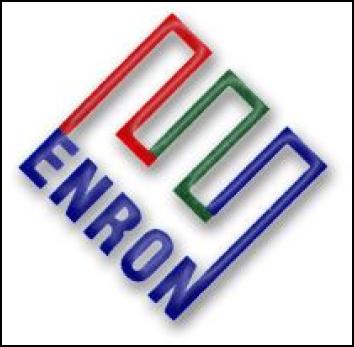
IMAGE: Enron
- Click Through To Original
Article
http://www.scoop.co.nz/mason/stories/HL0304/S00031.htm
(
Click Here for Part Two
http://www.scoop.co.nz/mason/stories/HL0304/S00035.htm
)
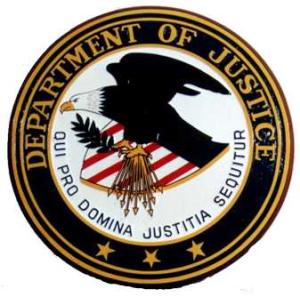
IMAGE: DoJ – Department
of What? Annual report 1999:
[or a myth in the making . . .]
Annual report 1999:
[or a myth in the making . . .]
To Our
Shareholders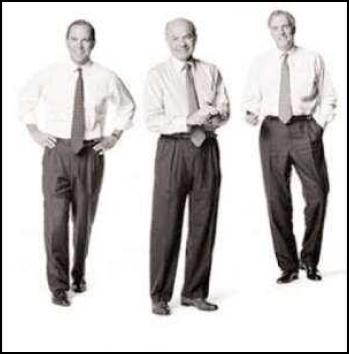
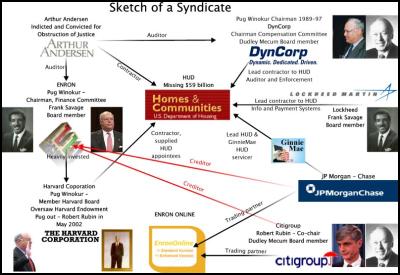
IMAGE:
Sketch Of A Syndicate – Click To Enlarge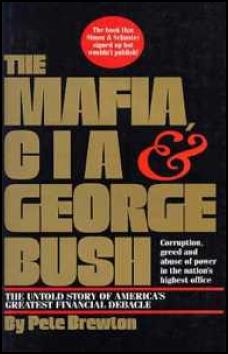
IMAGE: Cover Image "The
Mafia, CIA, and George Bush "
Catherine Austin Fitts is the President of Solari, Inc. ( http://solari.com) and a former
Assistant Secretary of Housing – Federal Housing
Commissioner in Bush I. She is currently litigating with
Ervin and Associates (acting on behalf of the government )
and the Department of Housing and Urban Development. If you
would like to support her litigation efforts, you can
through Affero/ Venture Collective:
http://www.solari.com/vote.php
If this “Mapping the
Real Deal” was useful for you, you can leave comments and
send a gift to Catherine Austin Fitts and Scoop Media
through Affer:
http://svcs.affero.net/rm.php?skid=sp0
and receive
future columns for free by e-mail - see... Free My Scoop to sign up. ![]()


 Ian Powell: Welcome Puberty Blockers Report But Beware Derailing Transphobia
Ian Powell: Welcome Puberty Blockers Report But Beware Derailing Transphobia Gordon Campbell: On Why We Can’t Survive Two More Years Of This
Gordon Campbell: On Why We Can’t Survive Two More Years Of This Binoy Kampmark: Join The Army; Travel To Exotic, Distant Lands; And Radicalise
Binoy Kampmark: Join The Army; Travel To Exotic, Distant Lands; And Radicalise Ramzy Baroud: Letters from Gaza – ‘Alhamdulillah. We Are Not Okay’
Ramzy Baroud: Letters from Gaza – ‘Alhamdulillah. We Are Not Okay’ Ian Powell: Imperialism, Chagos Islanders And The Fight To Return
Ian Powell: Imperialism, Chagos Islanders And The Fight To Return Binoy Kampmark: Frail Egos And Sandpit Colonialism - Australia, The United States And Invading Iraq
Binoy Kampmark: Frail Egos And Sandpit Colonialism - Australia, The United States And Invading Iraq